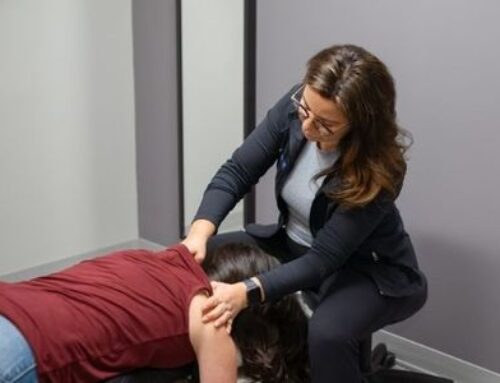In 2021, an estimated 25-30% of the American workforce switched to some form of remote work and it’s projected that by 2025, 22% of the workforce will remain remote going forward. So what does that mean for work station set up and workplace posture?
Most people aren’t willing to invest a lot of money into making sure their home office furniture is ergonomically designed for the best workplace posture. Take a look at your kitchen table – it’s probably a hard wood table with matching chairs with little to no cushioning. And what about your couch? The soft cushions are great to lounge on, but they don’t offer enough support to work from all day. I’m by no means praising workplace furniture either. Most office desks and chairs aren’t that much better, but they’re a step up. And what about your workplace set up? It’s highly likely that your monitor is set up too low causing tense shoulders up towards your ears. Your chair is probably set too far away from your desk forcing you to hunch forward.
Bottom line, remote employees don’t have the best set up to work from home where furniture is designed for esthetics more than postural support. Money and time are two things that are in short supply for many. I’d like to take a practical approach to improving your work from home set up.
Posture
The number one cause of low back pain comes from sitting for long periods of time with our chair positioned too far away from your desk. This position forces you to hunch forward, causing your low back to tense up over the course of the work day. You may not even feel it until you try to stand up at the end of the day.
How to fix it: Sit fairly close to your desk by sandwiching yourself between the desk and back of your chair with minimal wiggle room. This subconsciously encourages you to sit more upright since a forward lean will cause your abdomen to hit the desk.
Chair positioning
Keep your chair height high. Most of us sit with our chairs too low with forearms resting on the desk. In this position, your
shoulders can comfortably creep into an elevated position as fatigue and work day stress sets in.
How to fix it: Raise your chair up so your forearms rest on the table only if your shoulders remain down. If your shoulders tense and creep up, your forearms rise, reminding you to relax and lower your shoulders.
Monitor Height
If your computer is set on top of your desk, it’s more than likely too low. When your monitor is too low, your gaze will always point in a downward angle. This position causes overstretched posterior neck muscles and shortened anterior neck muscles leading to neck pain.
How to fix it: There are plenty of options, but the end result should be the same – a computer monitor set up at eye level. To do this, first check to see if your monitor can be raised and lowered. If so, set it at an appropriate height for a straight line of vision. If it can’t be adjusted or adjusted adequately, there are plenty of available options, like monitor stands, to improvise. Whichever option you choose, the goal is a monitor that is at eye level in order to keep your neck in a consistent neutral position.
Notice that none of my suggestions have to do with mindfulness or thoughtfulness when it comes to ergonomics and posture. Although I encourage you to be “resent” throughout your day, I’m also a realist. When your’e in the middle of your work day, it’s easy to get so deeply involved in what you’re doing and lose focus on your posture and set up. The above suggestions were intended to be simple and beneficial without much thought. Often times, simple and passive corrections are more sustainable than active ones.
Give the above tips a try – I hope they work for you.





